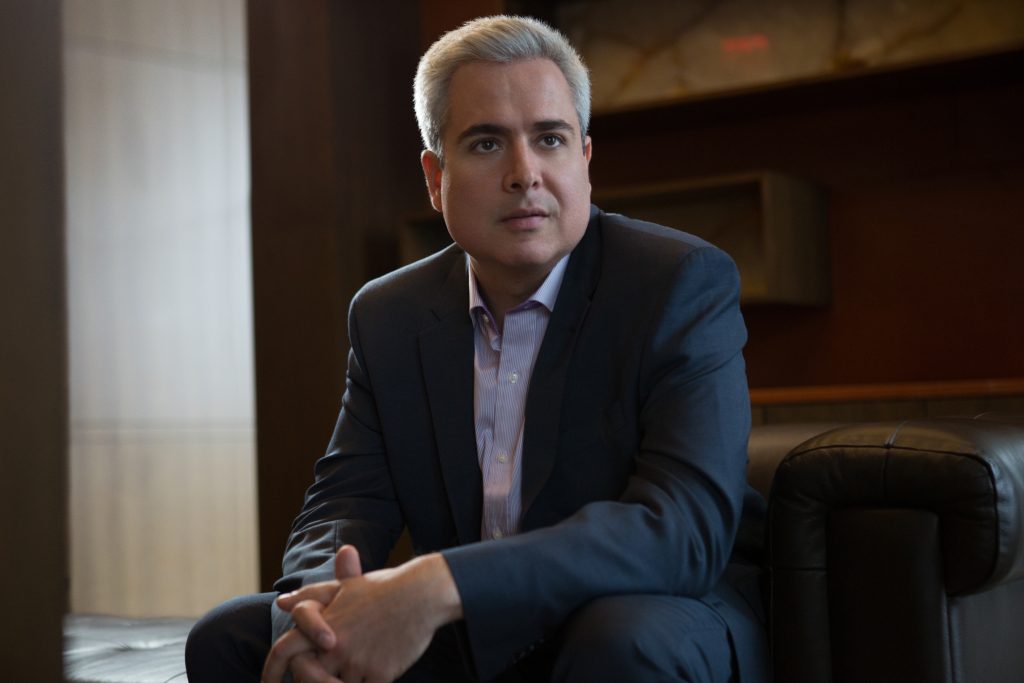Philomusica Quartet Features Pianist Juan Pablo Horcasitas
Concert features works by Beethoven, Faure and Frank Bridge.
The Philomusica Quartet, the quartet in residence at Wisconsin Lutheran College, opens its 17th season next Monday evening. The Philomusica serves as a trio for this concert with violinist Jeanyi Kim, violist Nathan Hackett, and cellist Adrien Zitoun welcoming pianist Juan Pablo Horcasitas for a pair of piano quartets. The strings will also perform a string trio. Alexander (Sasha) Mandl sits this one out while maintaining a busy conducting schedule.
The concert opens with a light string trio by Ludwig Van Beethoven, Serenade in D Major, Opus 8 (1795-97). The serenade structure is pretty easy to follow. A sequence of dances is sandwiched between identical march movements. A melodious Adagio is followed by a Menuetto (with trio), a playful Scherzo features alternating Adagio sections, a Polish Polonaise makes an appearance and an Andante with six basic variations complete the set. The Serenade may be listed as having six (or seven) movements, but a full 21 tempo changes mark the work.
English composer Frank Bridge is represented by a short quartet, the Phantasy Piano Quartet in F# Minor, H.94 (1910) Bridge replaced the conventional development section of the classical sonata form with contrasting but related episodes — mirroring the slow movement and scherzo elements one would find in a larger multi-movement chamber work.
Critic Paul Hindmarsh summarizes the arc of the piece:
The first section (Andante con moto) flows with Gallic grace, rather like a Barcarolle. There follows a fleet-footed scherzo (Allegro vivace), with a contrasting song-like trio section that looks back to the opening ideas. A short recitative-like passage then leads seamlessly back to the reprise, which opens out into an impassioned climax before dying away to what Benjamin Britten describes as ‘a short coda which suggests the deep red afterglow of a sunset’.
The concert concludes with Gabriel Fauré‘s Piano Quartet No. 1 in C Minor, Opus 15 (1876-79.) To critic Kai Christiansen “his music is unmistakably French with a strong kinship to both the suave Romanticism of Franck and the cool sensuality of Debussy.”
Christiansen introduces images that capture the soul of the music. The Adagio reminds him of a “dreamy nostalgia like a French café song whose languorous melancholy savors its own sorrow fondly. The piano continues to dream,” he continues, “lost, floating skyward like a brightly colored kite against the gray clouds, forever untethered from the gravity of the dark earth below.”
Christiansen also captures the more dramatic conclusion:
The magnificent swell and sweep of the finale carries in its wake a whole history of styles, textures and moods. Here one finds the Romantic heft of Franck waltzing with the pointillism of Ravel, the big orchestral rainbows from Iberian tributes of earlier Frenchmen amidst the intimate, ripe lyricism characteristic of all great chamber music.
Kim observes the difference between a piano quartet and a piano quintet; “It makes everything a little bit more delicate in its role because really a string quartet is a microcosm of an orchestra in its smallest form. If you take the second violin voice out, then it becomes more delicate. The dynamic is different.” The result is a more balanced, intimate concert with fewer virtuosic turns.
The Philomusica concert begins at 7:30 p.m. at Schwan Hall (8815 W. Wisconsin Ave.) on the Wisconsin Lutheran Campus on Monday, October 7. Tickets may be purchased at the box office (414-443-8802) or online. Free parking is available in a garage just east of the hall.
The Philomusica Quartet returns to Schwan Hall on February 10 to perform Beethoven’s String Quartet, Op. 95 “Serioso,” Maurice Ravel‘s String Quartet in F Major, and a rarely heard String Quartet No. 2 by Antonio Bazzini, a mid-nineteenth century Italian violinist and composer.
If you think stories like this are important, become a member of Urban Milwaukee and help support real, independent journalism. Plus you get some cool added benefits.
Preview
-
A Sacred Choir, 70 Voices Strong
 Dec 14th, 2025 by Martha Brown
Dec 14th, 2025 by Martha Brown
-
Prometheus Trio Goes Bohemian
 Dec 3rd, 2025 by Martha Brown
Dec 3rd, 2025 by Martha Brown
-
Present Music Offers New Choral Works
 Nov 20th, 2025 by Michael Barndt
Nov 20th, 2025 by Michael Barndt




















